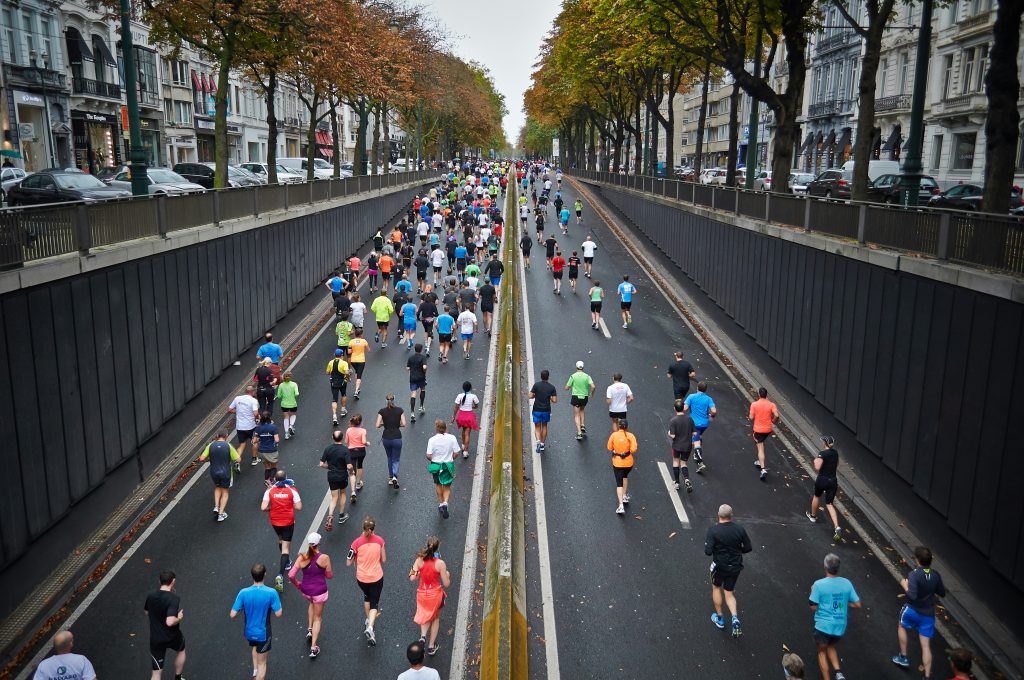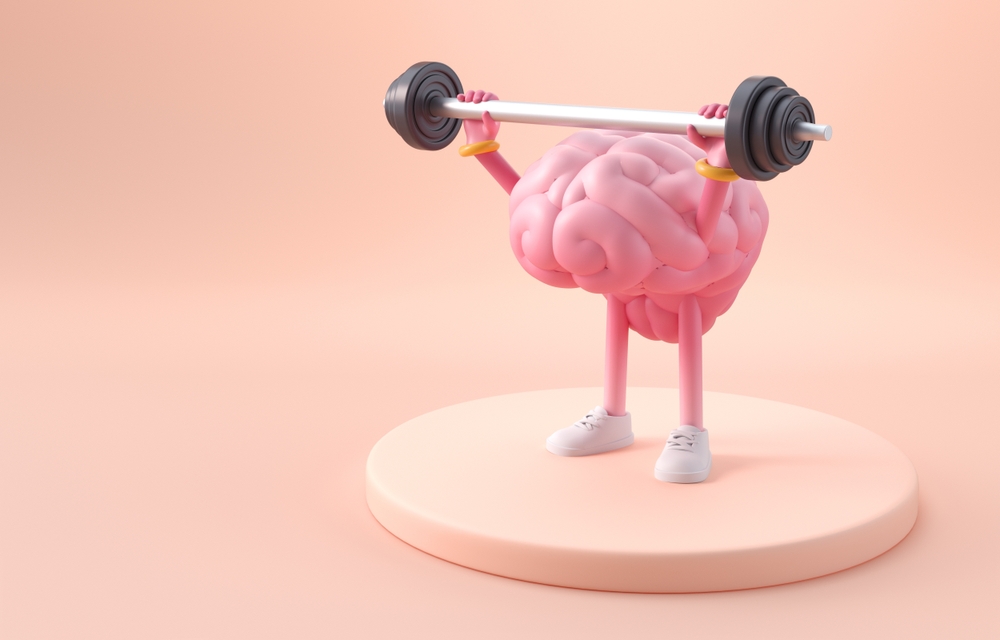Submit Traumatic Stress Dysfunction (PTSD) consists of three foremost symptom clusters: (1) re-experiencing the trauma within the current second, (2) avoidance of reminders related to the trauma, and (3) a persistent sense of present risk, manifested via exaggerated startle responses and hypervigilance (Karatzias et al., 2017).
Complicated PTSD (CPTSD) encompasses the three PTSD clusters together with three further clusters that point out disturbances in self-organization: (1) affective dysregulation, (2) detrimental self-concept, and (3) disturbances in relationships, as outlined by the Worldwide Classification of Illnesses, eleventh revision (ICD-11; Harrison et al., 2021).
Whereas bodily train is broadly recognised for its psychological well being advantages (e.g., Chekroud et al., 2018), its function in treating PTSD and complicated PTSD stays underexplored. Biernacka et al. (2024) aimed to attain the next analysis goals:
To discover trauma clinicians’ views on the function of bodily train within the remedy of PTSD and CPTSD.
To grasp trauma clinicians’ perceptions of the important thing limitations and facilitators that have an effect on their suggestions of bodily train as a supportive remedy for PTSD and CPTSD.

Analysis so far on bodily train as a supportive intervention for PTSD and CPTSD stays restricted, and it usually neglects clinicians’ views.
Strategies
The examine concerned semi-structured interviews with certified psychological well being professionals within the UK who concentrate on treating PTSD and CPTSD in outpatient trauma providers. These tertiary-level providers make use of skilled psychological therapists who collaborate with purchasers on remedy selections.
The interview information was developed by the analysis workforce primarily based on the examine’s questions. It started with questions on scientific work and included contributors’ views on recommending bodily train for PTSD/CPTSD, together with perceived limitations and facilitators (e.g., What do you suppose might facilitate using bodily train as an adjunctive remedy for PTSD/CPTSD?).
Members had been recruited utilizing purposive and snowball sampling methods. The authors initially contacted potential contributors via skilled trauma networks and social media. clinicians had been then followed-up, and people who determined to take part supplied a written knowledgeable consent and accomplished a sociodemographic kind sharing details about their gender, age, ethnic background, occupation, office, and UK area. Interviews had been performed remotely and recordings had been transcribed verbatim, eradicating any figuring out data. Pseudonyms had been used within the outcomes to guard individuals’s anonymity.
Reflexive thematic evaluation (Braun & Clarke, 2006) was employed to analyse the info, capturing a variety of opinions that might inform future observe and analysis. Reflexivity was ensured inside workforce discussions, and authors’ beliefs and assumptions had been mentioned to cut back bias. The varied private {and professional} experiences of the analysis workforce enhanced the examine’s depth. The authors adopted a vital realist stance aligned with reflexive thematic evaluation ideas. Lastly, the researchers {followed} the Requirements for Reporting Qualitative Analysis (SRQR; O’Brien et al., 2014) and making certain trustworthiness via discussions with scientific friends and participant validation of preliminary findings.
Outcomes
The examine included 12 contributors, nearly all of whom had been feminine (75%). Members’ ages spanned a number of many years, with equal illustration from the 30–39, 40–49, and 50–59 age teams, every accounting for 25% of the pattern. A smaller proportion had been below 30 (16.7%), and just one participant (8.3%) was 60 or older. All contributors recognized as White (100%). Relating to skilled roles, most had been Medical Psychologists (75%), whereas the remainder had been evenly distributed amongst Counselling Psychologists, Counsellors/Psychotherapists, and CBT Therapists, every representing 8.3% of the pattern.
Members labored in numerous settings: half (50%) had been employed within the Nationwide Well being Service (NHS), 25% in non-public observe, and 16.7% at universities. One participant (8.3%) labored in each the NHS and personal observe. Members had been based in London (41.7%), with smaller representations from the South East (16.7%), South Central (16.7%), and South West (16.7%) areas of the UK. Just one participant (8.3%) was positioned outdoors of those areas nationally.
Three foremost themes regarding clinicians’ views on incorporating bodily train into the remedy of PTSD and CPTSD had been recognized: the potential advantages of bodily train, the limitations to together with bodily train, and the significance of individualised care that underlies each the advantages and limitations.
Potential advantages of bodily train
All contributors recognised the worth of bodily train. Nonetheless, there have been variations in how they perceived its significance and carried out it in remedy. Many clinicians emphasised train as an important a part of restoration for trauma-affected people. Whereas some noticed it as normal well being recommendation, others built-in it intentionally into remedy, recognising its means to assist each the thoughts and physique. Train was usually included into periods as a part of a holistic strategy to treating trauma, bridging psychological and physiological well-being. For some purchasers, bodily train turned a way to rebuild their lives. Actions equivalent to yoga, operating, and strolling had been described as automobiles for reclaiming autonomy and confidence.
So, there’s the bodily train half, however is it the intrinsic bodily train that’s the necessary bit or is it all of the stuff that comes round it, just like the social buildings or the issues like individuals doing park run.
Clinicians discovered that bodily train was useful for purchasers in decreasing signs of hyper-arousal and hyper-vigilance, in addition to managing anxiousness.
I additionally felt it might assist him with that fixed shaky sense of being vigilant and on guard. So, it might assist to make that anxiousness decrease.
A number of clinicians indicated that they deliberately use bodily train for its potential advantages in processing trauma recollections. They imagine that sure sorts of train that have interaction either side of the physique could also be significantly useful, as they’ll mimic the processes concerned in Eye Motion Desensitization and Reprocessing (EMDR).
It additionally suits alongside for me one thing of EMDR, as effectively. So, shifting or operating, it’s about bilateral stimulation, so you’re activating the left and right-hand sides. (…) so strolling is sweet for that sort of motion that prompts bilateral stimulation.
Boundaries
Clinicians recognized a number of limitations that hinder the mixing of bodily train in trauma remedy. These challenges had been grouped into environmental, consumer, clinician, and service-related limitations.
Clinicians emphasised that socio-economic components considerably impression purchasers’ means to have interaction in train. Weak purchasers usually lack sources like health club memberships or correct trainers. The restricted availability of packages, equivalent to “train on prescription” additional compounded this subject, with many clinicians uncertain about its present standing.
[vulnerable clients] don’t have these sources and really feel remoted. They’re those that want this. However we want funding. You want the funding, for the assist staff, the sort of protected areas within the health club, for coaching individuals within the health club or outdoor or, , wherever it’s, having a variety of various approaches, and various things for various ages.
The shortage of trauma-informed and culturally applicable train areas posed one other problem. Gyms and swimming swimming pools had been usually perceived as intimidating, particularly for abuse survivors. Clinicians described how such environments might be loud, predominantly male, and triggering for purchasers.
There’s something fairly difficult about being, say, in a swimming pool or a health club setting, , there’s a lot, for girls, there may be lots of males round, your physique is kind of on show, and I feel that for individuals who have been abused, of it there may be like everlasting scarring, issues like that, I feel that may be fairly a problem.
Cultural issues had been equally necessary. For instance, purchasers with language limitations would possibly battle to speak particular wants, equivalent to train diversifications for bodily limitations, to instructors.
In regard to client-driven components, purchasers usually confronted extreme anxiousness about leaving their properties, making out of doors train inaccessible. Whereas home-based exercises supplied another, house constraints in small properties additional restricted this selection. Train itself might be triggering. Pure bodily sensations equivalent to laboured respiratory might remind purchasers of their trauma. Nonetheless, clinicians famous that these triggers introduced alternatives for therapeutic desensitisation.
…lots of my purchasers keep away from leaving the home fully, simply because they’re so anxious about being triggered by issues like noises, airplanes, sure smells, (…) in case you consider train, you may be pondering to depart the home. Clearly, you are able to do work from home, but when your own home is kind of small, you’re fairly restricted, aren’t you?
Bodily situations, equivalent to persistent ache, had been important limitations to train. Whereas clinicians acknowledged that even minimal exercise might be useful, they burdened the necessity for managed expectations.
Many purchasers’ comorbid melancholy severely diminished their motivation to train. Clinicians described this as a “rooster and egg” scenario, the place purchasers’ lack of motivation might be addressed by train, however getting began was an impediment in itself. Shoppers usually struggled to see the worth in train, significantly if that they had no prior expertise of its advantages or felt disconnected from earlier athletic skills. Emotions of disgrace, significantly amongst purchasers with CPTSD, additional hindered their engagement in self-care, together with train.
Lastly, some purchasers deprioritised train resulting from previous struggles to fulfill fundamental wants like meals and shelter.
Moreover, many clinician and service-level limitations had been recognized. A number of clinicians admitted that train was usually missed in trauma remedy. Some contributors mirrored that the interviews themselves had been the primary time that they had thought of train as a part of remedy. Clinicians expressed frustration with the restricted emphasis on train inside their career. Some clinicians felt unprepared to advocate train safely, significantly for purchasers with bodily well being points.
I feel typically it might really feel a bit deskilled by way of understanding how a lot to push. Consistent with that, you don’t wish to exacerbate a bodily situation, however on the identical time, we all know that lots of issues like persistent ache, fibromyalgia, any … like some sort of tempo exercise is definitely extra useful, however I suppose it’s not essentially having the data to know the way a lot to push that.
Members highlighted the necessity for multidisciplinary groups, together with private trainers or occupational therapists, to bridge this hole. Clinicians additionally emphasised the necessity for extra accessible proof, pointers, and sources to confidently advocate train.

Clinicians discovered train to be useful in trauma remedy, nevertheless some notable limitations included lack of scientific confidence and coaching to include bodily train in psychotherapy.
Conclusions
This examine highlights the potential of bodily train as a beneficial part within the remedy of PTSD and complicated PTSD, whereas emphasising the significance of addressing systemic limitations to its implementation. By exploring trauma clinicians’ views, it gives key insights for integrating train into trauma care and advancing extra complete, patient-centred remedy approaches.

The findings underline the significance of creating personalised approaches to combine bodily train into trauma remedy whereas addressing present service gaps.
Strengths and limitations
The examine gives beneficial insights into trauma clinicians’ views on incorporating bodily train into the remedy of PTSD and complicated PTSD. It addresses an necessary hole in understanding non-traditional therapeutic approaches. A serious energy of the analysis is its give attention to a subject that’s usually missed in trauma remedy, which has the potential to reinforce evidence-based observe. The qualitative design permits an in-depth exploration of clinicians’ experiences, yielding nuanced findings that might assist inform tailor-made interventions. The inclusion of a various group of clinicians provides depth to the info, providing a broader perspective on the challenges and facilitators related to integrating train into trauma remedy.
The paper holds scientific significance, highlighting the potential advantages of train in enhancing outcomes for PTSD and CPTSD sufferers. Its relevance is heightened by the rising curiosity in holistic psychological well being interventions. The findings advocate for additional exploration into how train can complement conventional therapies, doubtlessly increasing remedy choices for people with trauma-related issues.
Nonetheless, the examine does have limitations. Whereas the pattern dimension is sufficient for qualitative analysis, it might not totally signify the views of trauma clinicians throughout numerous contexts and healthcare programs. The pattern displays variety in skilled roles and settings, however it’s much less numerous by way of ethnicity and geography.
Though the findings spotlight limitations equivalent to useful resource constraints and lack of coaching, the examine doesn’t present detailed options or actionable suggestions for overcoming these challenges. Future analysis might tackle these gaps by exploring views from a extra numerous pattern and testing sensible methods for integrating train into trauma care.

The examine underscores the promise of train in trauma remedy whereas revealing gaps in variety and actionable methods.
Implications for observe
Integrating bodily train into the remedy of PTSD and CPTSD holds promise for enhancing affected person outcomes, however sure sensible challenges should be addressed. Clinicians ought to take into account together with bodily exercise as a complement to conventional therapies, customising approaches to fulfill the person wants and preferences of every affected person. To implement this successfully, coaching packages ought to equip clinicians with the talents essential to combine train into remedy plans and to deal with potential limitations, equivalent to limitations in sources and affected person readiness.
Service suppliers ought to develop accessible, trauma-informed train packages in collaboration with health professionals to make sure security and inclusivity. Group-based train initiatives might also promote social assist, which will be useful for trauma survivors. Policymakers and healthcare leaders ought to spend money on sources to increase entry to those packages, particularly in underserved areas.
Lastly, extra efforts are wanted to diversify analysis and observe by together with views from a broader vary of clinicians and sufferers throughout totally different cultural and geographic contexts. This strategy can reveal culturally particular limitations and facilitators, resulting in extra equitable implementation of exercise-based interventions.

Harnessing the therapeutic potential of bodily train requires tailor-made approaches, clinician coaching, and inclusive program design.
Assertion of pursuits
No conflicts of curiosity to declare.
Hyperlinks
Main paper
Biernacka, N., Talwar, S., & Billings, J. (2024). Trauma clinicians’ views of bodily train as a part of PTSD and complicated PTSD remedy: A qualitative examine. PLOS Psychological Well being, 1(4), e0000114.
Different references
Braun, V., & Clarke, V. (2006). Utilizing thematic evaluation in psychology. Qualitative analysis in psychology, 3(2), 77-101.
Chekroud, S. R., Gueorguieva, R., Zheutlin, A. B., Paulus, M., Krumholz, H. M., Krystal, J. H., & Chekroud, A. M. (2018). Affiliation between bodily train and psychological well being in 1· 2 million people within the USA between 2011 and 2015: a cross-sectional examine. The lancet psychiatry, 5(9), 739-746.
Harrison, J. E., Weber, S., Jakob, R., & Chute, C. G. (2021). ICD-11: a world classification of ailments for the twenty-first century. BMC medical informatics and choice making, 21, 1-10.
Karatzias, T., Cloitre, M., Maercker, A., Kazlauskas, E., Shevlin, M., Hyland, P., … & Brewin, C. R. (2017). PTSD and Complicated PTSD: ICD-11 updates on idea and measurement within the UK, USA, Germany and Lithuania. European journal of psychotraumatology, 8(sup7), 1418103.
O’Brien, B. C., Harris, I. B., Beckman, T. J., Reed, D. A., & Prepare dinner, D. A. (2014). Requirements for reporting qualitative analysis: a synthesis of suggestions. Educational medication, 89(9), 1245-1251.
Photograph credit
Source link



